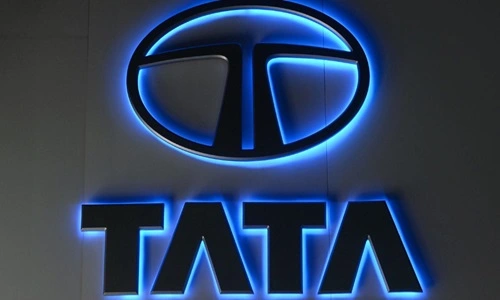Tata Motors, one of India’s most celebrated automotive manufacturers, has carved a niche both domestically and internationally. It is the flagship automotive company of the Tata Group, a conglomerate known for its emphasis on ethical business practices and corporate responsibility. Tata Motors has seen success across various segments, from commercial vehicles to passenger cars, but faces a complex landscape as it maneuvers through challenges and opportunities brought about by technological, regulatory, and market shifts. This article offers a deep dive into Tata Motors’ strengths, weaknesses, opportunities, and threats (SWOT), setting a foundation for its future strategies.

Strengths
1. Established Brand Name and Heritage: Tata Motors, part of the Tata Group, enjoys an excellent reputation in India, symbolizing trust and reliability. This brand image, cultivated over decades, helps the company maintain a stronghold in the domestic market, especially in the commercial vehicle segment.
2. Diversified Product Portfolio: The company offers a wide range of products, including passenger cars, trucks, buses, and even defense vehicles. The diversity not only makes Tata Motors resilient to downturns in specific market segments but also allows it to capture value from a broad range of customer needs.
3. Innovation and Adaptability: Tata Motors has consistently innovated its product lines. Its pioneering spirit is evident in vehicles like the Tata Nano, an economical car aimed at low-income households, and the Nexon, which became one of India’s first electric SUVs. Tata’s Electric Vehicle (EV) portfolio has been lauded as a step in the right direction, catering to India’s burgeoning appetite for cleaner, greener transportation options.
4. Strong Distribution Network: Tata Motors boasts a vast distribution network, ensuring product availability across the country and a global footprint in Europe, Africa, and the Middle East. The company’s extensive reach strengthens its position in a competitive automotive market, enabling it to cater to diverse customer bases worldwide.
5. Strategic Acquisitions and Collaborations: The acquisition of Jaguar Land Rover (JLR) in 2008 was a strategic move that expanded Tata Motors’ footprint in luxury markets and brought in technological expertise. Despite challenges with JLR’s performance, the acquisition provided the company with valuable insights and helped position Tata Motors as a global automaker.
Weaknesses
1. High Dependence on JLR: Tata Motors’ dependence on JLR for a significant portion of its revenue is a double-edged sword. While JLR brings in premium market value, it also exposes Tata Motors to vulnerabilities in foreign markets, especially Europe, which has faced economic uncertainties and emissions regulations. The heavy reliance on JLR’s performance has affected Tata’s financials during global downturns.
2. High Debt Levels: Despite efforts to reduce debt, Tata Motors carries a substantial debt burden, primarily due to JLR’s capital-intensive needs and investments in electric mobility. High debt limits its flexibility to maneuver through industry disruptions and may deter potential investors wary of financial risk.
3. Quality Issues and Customer Satisfaction: Tata Motors has faced issues with product quality and after-sales service, particularly in the domestic market. Reports of vehicle breakdowns, recalls, and inconsistent customer service have dented the company’s reputation. Though recent improvements have been made, it still requires continuous focus to meet the expectations of the modern, discerning consumer.
4. Weak Position in Global Passenger Car Market: Tata Motors has struggled to make a significant impact in the international passenger car market, where it faces stiff competition from global giants like Toyota, Honda, and Hyundai. While JLR has a global footprint, Tata’s own passenger vehicle lineup has a limited reach outside India.
Opportunities
1. Growing Electric Vehicle Market: India’s electric vehicle market is at a nascent stage, yet it promises exponential growth, driven by government initiatives, rising fuel costs, and increasing environmental consciousness. Tata Motors’ recent electric models, such as the Tata Nexon EV, have been well-received. Leveraging its early entry into the EV market, Tata Motors has the opportunity to dominate this segment domestically and gradually expand into international EV markets.
2. Expansion in Emerging Markets: With growing automotive demand in regions like Africa, Southeast Asia, and Latin America, Tata Motors can enhance its focus on these emerging markets. The company’s ability to offer affordable, rugged, and reliable vehicles gives it a natural advantage over more expensive global competitors in these regions.
3. Government Push for Localization and Make in India: India’s government has introduced policies that encourage local manufacturing under the “Make in India” initiative. Tata Motors can benefit from subsidies, reduced taxes, and other incentives aimed at boosting domestic automotive production. These initiatives also aim to reduce import dependency and make India a global manufacturing hub, positioning Tata to emerge as a major player in the international market.
4. Growing Demand for Commercial Vehicles: With increased infrastructure development, logistics requirements, and e-commerce growth, India’s commercial vehicle demand is set to grow. Tata Motors, already a leader in this segment, is well-positioned to capitalize on this rising demand, especially if it innovates further with fuel-efficient and electric commercial vehicles.
5. Leveraging Digital Transformation and Connected Cars: The global trend towards connected, smart vehicles provides Tata Motors with an avenue to innovate and align with customer preferences for tech-driven experiences. Partnerships with tech firms and further investment in research and development (R&D) could propel Tata Motors ahead in the connected vehicle space.
Threats
1. Intense Competition: Tata Motors faces intense competition domestically from companies like Maruti Suzuki, Hyundai, and Mahindra & Mahindra, which have strongholds in various segments. Additionally, international giants like Tesla, with its EV lineup, pose threats in the electric mobility space, while existing global players dominate the luxury segment, challenging JLR’s growth.
2. Supply Chain Disruptions and Raw Material Price Volatility: The automotive sector has been grappling with supply chain issues, especially with the global semiconductor shortage impacting vehicle production. Additionally, price volatility in raw materials like steel, aluminum, and lithium (crucial for EV batteries) poses cost management challenges.
3. Stringent Emission Norms and Environmental Regulations: Both India and the EU are imposing increasingly stringent emissions standards. Tata Motors must invest substantially to make its vehicles compliant, especially with JLR’s luxury portfolio, which tends to have higher emissions. Non-compliance could result in penalties, increased production costs, and a potential loss of market share in regulated regions.
Economic Uncertainty and Exchange Rate Fluctuations Tata Motors’ international exposure, especially with JLR, subjects it to exchange rate fluctuations and economic conditions in different regions. Recent global challenges, including inflation and slowing growth in key markets, could impact profitability, making it crucial for Tata Motors to adopt hedging strategies to mitigate currency risk.
4. Cybersecurity Risks in Connected Vehicles: With Tata Motors increasingly embracing connected car technology, it faces cybersecurity threats. Cyber-attacks on vehicle systems or customer data breaches could harm its reputation, necessitate expensive security upgrades, and risk customer trust.
Future Outlook
As Tata Motors progresses, it stands at a critical juncture. The company is well-positioned to harness the potential of India’s EV market, build upon its commercial vehicle leadership, and strengthen its domestic portfolio. However, to maintain and expand its market position, it must address weaknesses and mitigate the looming threats.
Continued investment in research and innovation, partnerships with technology companies, and a strong push toward sustainable mobility will be paramount. Success in these domains could allow Tata Motors not only to navigate existing challenges but also to emerge as a global leader in the transition towards cleaner, connected, and more efficient transportation solutions. As India and the world shift towards electric and sustainable mobility, Tata Motors has a significant opportunity to define its future trajectory.

